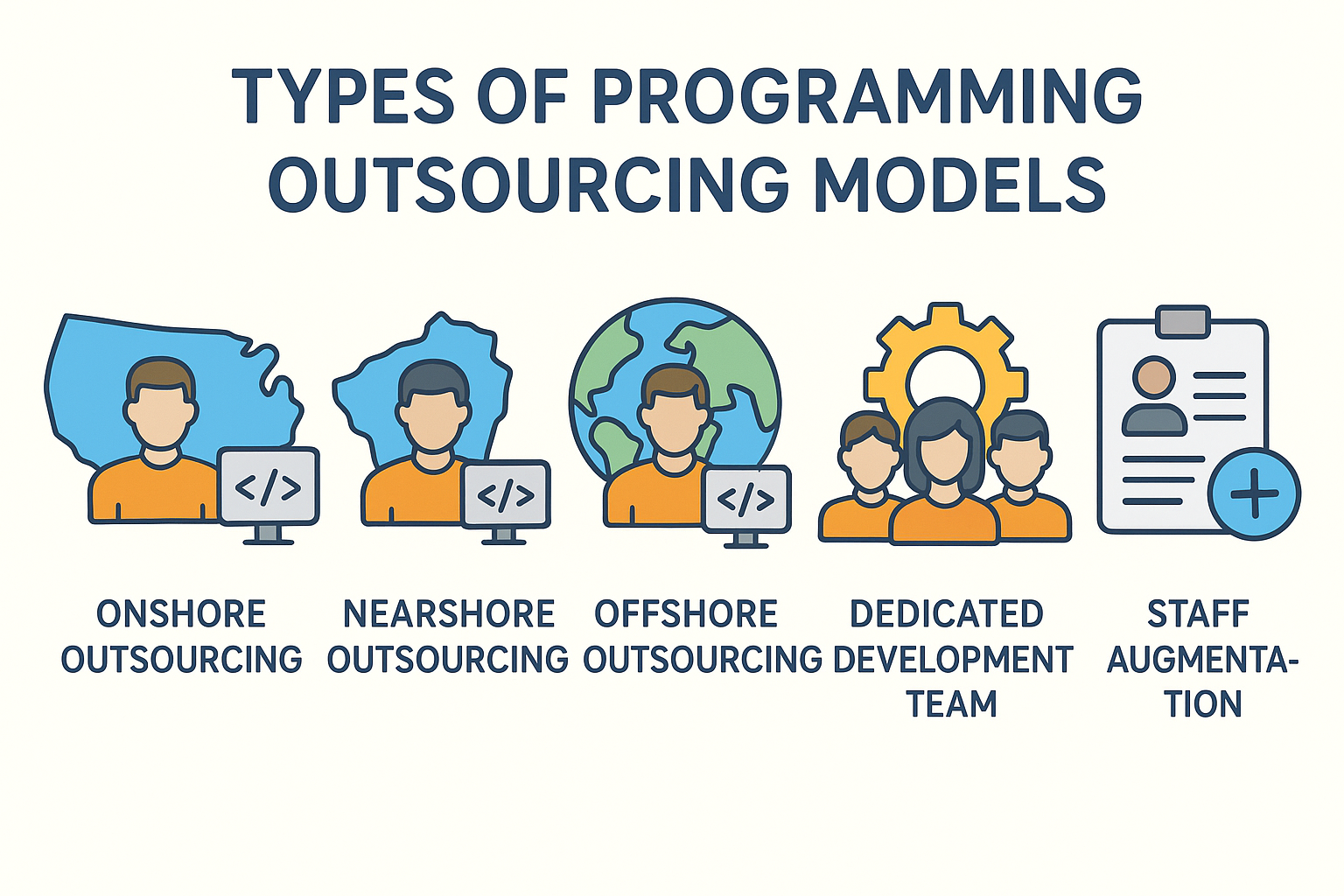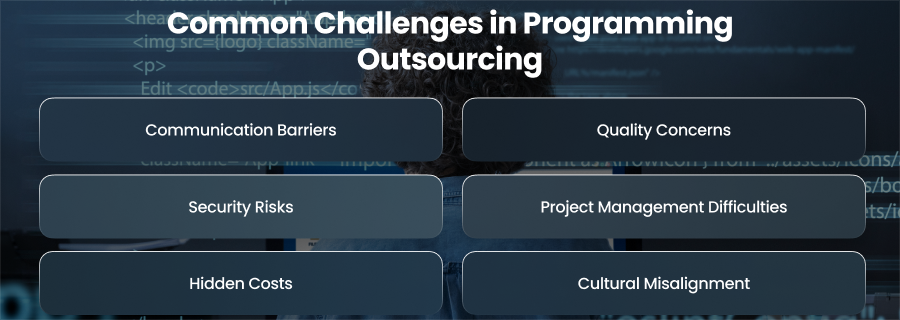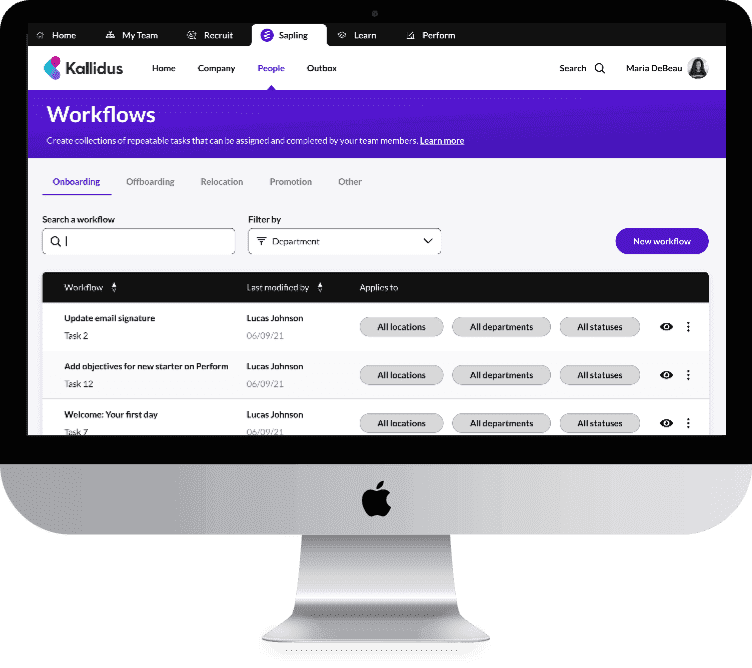According to Outsourcing Accelerator, North America’s software outsourcing market will reach $227.40 billion in the next two years. This is because businesses of all sizes rely on software to operate. However, hiring in house developers for every project isn’t always cost effective. Therefore, this is where programming outsourcing helps.
Programming outsourcing allows companies to delegate software development tasks to external companies. This gives them access to global talent and faster delivery times. Hence, instead of spending heavily on hiring and training, businesses can hire specialized expertise whenever they need it.
So, in this guide, we will discuss what programming outsourcing is and its different outsourcing models.
What is Programming Outsourcing?
Programming outsourcing is the practice of hiring third party developers or agencies to handle software development tasks, rather than building everything in house. It includes:
- Web development
- Mobile app development
- Backend and API development
- Maintenance and support
- Cloud and DevOps services
Additionally, for short term or specialized projects, businesses may not need to increase their regular personnel. When an alternative is required, they may employ specialists as needed, ensuring that the appropriate skills are applied to the right project.
Additionally, outsourcing avoids the need for lengthy hiring cycles and lowers overhead expenses as compared to in house development.
Why Companies Outsource Programming?

Cost Savings
One of the most immediate benefits of outsourcing programming is cost reduction. This is especially true in countries with high labor costs. Moreover, companies save a large portion of this expense by outsourcing. They can also hire qualified workers in areas with far cheaper labor expenses, just paying for the services they require. For startups and small to medium-sized businesses that need to make the most of their limited funds while yet producing dependable digital goods, outsourcing is therefore particularly alluring.
Access to Global Talents
There is a bigger need than ever for qualified developers worldwide. As a result, businesses may now employ the greatest talent from anywhere in the globe since they are no longer limited by location.
Additionally, initiatives requiring specialized knowledge that may be difficult to get locally benefit greatly from having access to a variety of skill sets.
Faster Time to Market
In highly competitive marketplaces, speed may make all the difference. Businesses that delay product introductions run the risk of losing market share to rivals. Through the use of seasoned teams who can start working right away, outsourcing helps companies expedite development.
Additionally, when working with foreign teams in different time zones, development might sometimes continue around the clock. Hence, this can shorten delivery times.
Flexibility
Companies must adapt swiftly, and outsourcing enables them to do so. As a result, businesses can easily grow their contracted staff to meet evolving project needs.
For example, a business could require 10 developers to introduce a product, but just two for continuing support. Therefore, outsourcing enables smooth expansion without long term commitment, as opposed to hiring and then decreasing an internal workforce.
Focus on Business Activities
Programming isn’t a core focus of every business. A healthcare startup can be more concerned with patient care solutions. Conversely, an eCommerce business may give marketing and consumer interaction first priority. Therefore, while external professionals handle the technical job, internal teams may concentrate on their strengths when programming activities are outsourced.
Reduced Risk of Hiring Mistakes
Recruiting the wrong developer in house can be costly, not only in terms of money but also in lost time. Additionally, outsourcing reduces this risk by allowing businesses to test out personnel before making a long term commitment. Additionally, a lot of outsourcing partners provide trial periods or short term contracts to assist companies in assessing compatibility and skill sets before expanding their partnership.
Access to Latest Tools
Leading outsourcing companies for software development make investments in cutting-edge frameworks and technologies. As a result, companies may indirectly obtain cutting edge technology and industry best practices by collaborating with them.
Business Continuity
For many companies, outsourcing also acts as a safeguard. Projects may be delayed if internal developers are unwell or unavailable. Because external teams may swiftly step in to guarantee projects don’t suffer from downtime, outsourcing offers continuity. Furthermore, outsourcing partners frequently have established procedures and backup plans that maintain efficiency.
Types of Programming Outsourcing Models

Onshore Outsourcing
Hiring a programming team or agency based in the same nation as your company is known as onshore outsourcing. Additionally, this method removes a lot of the obstacles that businesses have while outsourcing, such as time zone variations and cultural misinterpretations. Contract administration and compliance are considerably simpler because both parties are subject to the same legal framework. The largest benefit is also smooth communication, which makes onshore outsourcing very appealing for projects that need fast turnaround times and regular engagement.
However, the drawback is cost. Since labor prices inside the same nation are frequently equivalent to in-house compensation, onshore outsourcing is typically the most costly alternative. Therefore, this strategy works best for businesses that value ease over maximizing cost savings.
Nearshore Outsourcing
Delegating programming work to businesses in adjacent or surrounding nations is known as nearshore outsourcing. For example, a U.S. corporation may work with a Mexican developer. Consequently, this strategy offers a cost value balance. The slight time zone differences also make communication simpler. Geographical closeness and cultural resemblance also lessen the possibility of miscommunication.
Offshore Outsourcing
One aspect of offshore outsourcing is hiring people from far-off countries. Pakistan and Vietnam are some of the most preferred locations for remote developer hiring. This approach offers access to big pools of highly skilled developers with a broad spectrum of technical know how in addition to notable cost benefits. Additionally, offshore outsourcing is particularly alluring to businesses with limited resources.
However, problems like time zone differences and language difficulties might make teamwork more difficult. Successful offshore outsourcing requires open communication methods and efficient project management techniques.
Dedicated Development Team
Employing a group of external developers who work only on your project as though they were inside employees is known as a dedicated development team approach. Furthermore, this strategy is intended for long term collaboration and evolving projects, in contrast to project based outsourcing. As the committed employees eventually gain a thorough understanding of your company’s processes continuity becomes achievable.
Despite being more expensive than temporary outsourcing, this approach is suitable for startups or businesses that need ongoing development because of its stability. It also offers a high degree of control because clients frequently supervise the team in person while the outsourced provider handles administrative tasks like payroll.
Staff Augmentation
A flexible outsourcing approach known as staff augmentation allows companies to expand their internal teams by hiring outside engineers. These developers collaborate with internal employees and are typically directly supervised by the management of the business. Additionally, businesses that require temporary help or are experiencing unanticipated talent shortages, as during product launches, might benefit greatly from staff augmentation.
The main advantage is flexibility; businesses may swiftly use specialized skills without committing to long term personnel. However, successful management is essential since these engineers become an integral part of your team.
Common Challenges in Programming Outsourcing

Communication Barriers
Effective communication is one of the most difficult aspects of outsourcing. Misunderstandings may result from variations in time zones. As a result, without open channels of communication, expectations could not coincide. Poor outcomes or project delays may arise from this. Businesses must thus set up communication protocols in order to keep their staff in sync.
Quality Concerns
Working with programmers who are outsourced might make it challenging to guarantee consistent code. Standardized coding procedures and comprehensive quality checks may be absent from certain outsourcing providers. Additionally, this raises the possibility of issues like glitchy apps or increased technological debt. Businesses should establish quality standards. Moreover, they should implement appropriate testing procedures to prevent these problems.
Security Risks
Outsourcing programming frequently entails giving third party suppliers access to systems and sensitive data. Concerns around data breaches and the abuse of private information are also raised by this. Companies that don’t have the right security agreements might endanger themselves. As a result, businesses should confirm that the outsourcing partner follows strict security regulations.
Project Management Difficulties
Outsourced programming projects need to be managed differently from in house development. A lack of visibility or poor cooperation can result in scope creep. Trustworthy project management methods are often underestimated by businesses. Strong project management and consistent progress monitoring are also necessary for efficient outsourcing in order to uphold responsibility.
Hidden Costs
Although outsourcing is often pursued to save costs, hidden expenses can quickly add up. These may include onboarding costs and legal agreements. Furthermore, these costs may lessen the cost benefit of outsourcing if they are not appropriately recorded. Additionally, clear price structures can assist companies in avoiding unforeseen costs.
Cultural Misalignment
Disparities in culture between in house teams and contracted programmers can occasionally lead to conflict. Productivity may be impacted by a misalignment between work styles and methods to issue solving. In order to overcome certain obstacles, businesses must also continue to be conscious of these distinctions. Also, they should cultivate an atmosphere of respect for one another.
Best Practices for Choosing the Right Outsourcing Partner

Evaluate Technical Expertise
Different outsourcing companies specialize in different fields. Thus, whether your project requires web development or machine learning, be sure the vendor has shown to be knowledgeable in those areas. To confirm their technical proficiency, you might request case studies. A partner who is well versed in your sector is more likely to comprehend your company’s requirements.
Communication Skills
Communication is one of the most neglected aspects of outsourcing. Poor communication can cause a project to fail, even if a provider has exceptional technical expertise. Additionally, you make certain that the partner has procedures in place for frequent updates. Also, their toolbox for communication should include Slack. Additionally, during the course of a project, good communication helps to maintain alignment.
Time Zone Compatibility
The seamless operation of outsourcing partnerships is greatly influenced by time zone overlap and cultural alignment. Coordination may deteriorate if you select a partner with notable cultural differences or nonoverlapping work schedules. As a result, you want to seek suppliers who exhibit adaptability in meeting scheduling and team culture.
Review Security Standards
Data security is a concern in outsourcing. Check to see if the partner follows industry standard security protocols, such as data encryption. Asking about their internal protocols for protecting sensitive information is also a smart idea. A trustworthy outsourcing partner must be honest about their security procedures.
Analyze Pricing Models
One of the main factors influencing outsourcing is cost, although the best solution is rarely the cheapest. As a result, you want to look for companies who provide clear price structures. Additionally, make sure there aren’t any hidden expenses.
Test with a Pilot Project
It’s advisable to begin with a modest test project before committing to a long term contract. This gives you a low risk setting in which to assess the vendor’s technical know-how and dependability. A trial project that is effective increases trust in the collaboration.
Final Word
Outsourcing programming is a calculated strategy that aids in cost reduction and effective business growth. Even if there are obstacles like security and communication, success is guaranteed when the correct model and partner are chosen. Also, with proper planning, businesses can maximize results and maintain a competitive advantage.



















